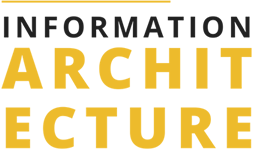Learning and performance support
Read time: 2 minutes
On this page
Overview
Learning is a huge field made of:
- Formal learning: Classroom or online courses
- Experiential learning: Learning through doing and reflecting on these activities
- Performance support: Learning accessible at the moment of need. This is often a 'how to', job aid, or quick reference in any format that provides point of need information in an easy-to-understand way
- Self-directed information seeking: Users often go to a website to locate the answer
themselves, for example:
- I need to find out when my tax return is due
- I want to know the costs of a 10-year passport
- I need to determine how long my child's car seat is good for and when it expires
Learning as a discipline and deliverable is often 'owned' by the training area of an organization.
This can result in performance support products not being featured at the true users’ point-of-need within the overall IA of the site, but instead placed in a stand-alone training-focused repositories, similar to the way formal courses are often treated.
How this affects IA
Typical web content is usually written by the subject matter expert (SME). It can take on many forms including:
- Explanatory (What is it)
- Instructive (How to do it under common circumstances)
- Supportive (How to do it under uncommon circumstances)
- Transactional (Do it now)
- Assistive (How to get help)
- Reference (Exhaustive information)
- Foundational (Acts, policies)
- Promotional (Audience-specific and time sensitive, and has a specific outcome)
Performance support can overlap:
- Explanatory (What is it)
- Instructive (How to do it under common circumstances)
- Supportive (How to do it under uncommon circumstances)
- Assistive (How to get help)
This creates a grey area of ownership and results in competing information sources.
It's worth noting that detaching performance support content from the site's IA isn't in line with performance support's own industry practices:
Even if an organization builds and develops a new performance support team, it will still not be successful without the right partnerships with key stakeholders in the organization. In particular, a performance support team must work in tandem with the teams that own the employee work interfaces.
[…] attention should be paid to developing the content in a way that will serve the overall mission and vision of the firm beyond just the specific department in which the training takes place.
Job aids and performance support are one with the work. They converge with the task.
They go where the work is rather than taking you away from the work to go to training.
Take aways
Performance support is a great way to meet user needs. When used, it must be attached to the relevant task within the IA of the organization's site to avoid duplicating content and confusing users.
All course sections
- Date modified:
